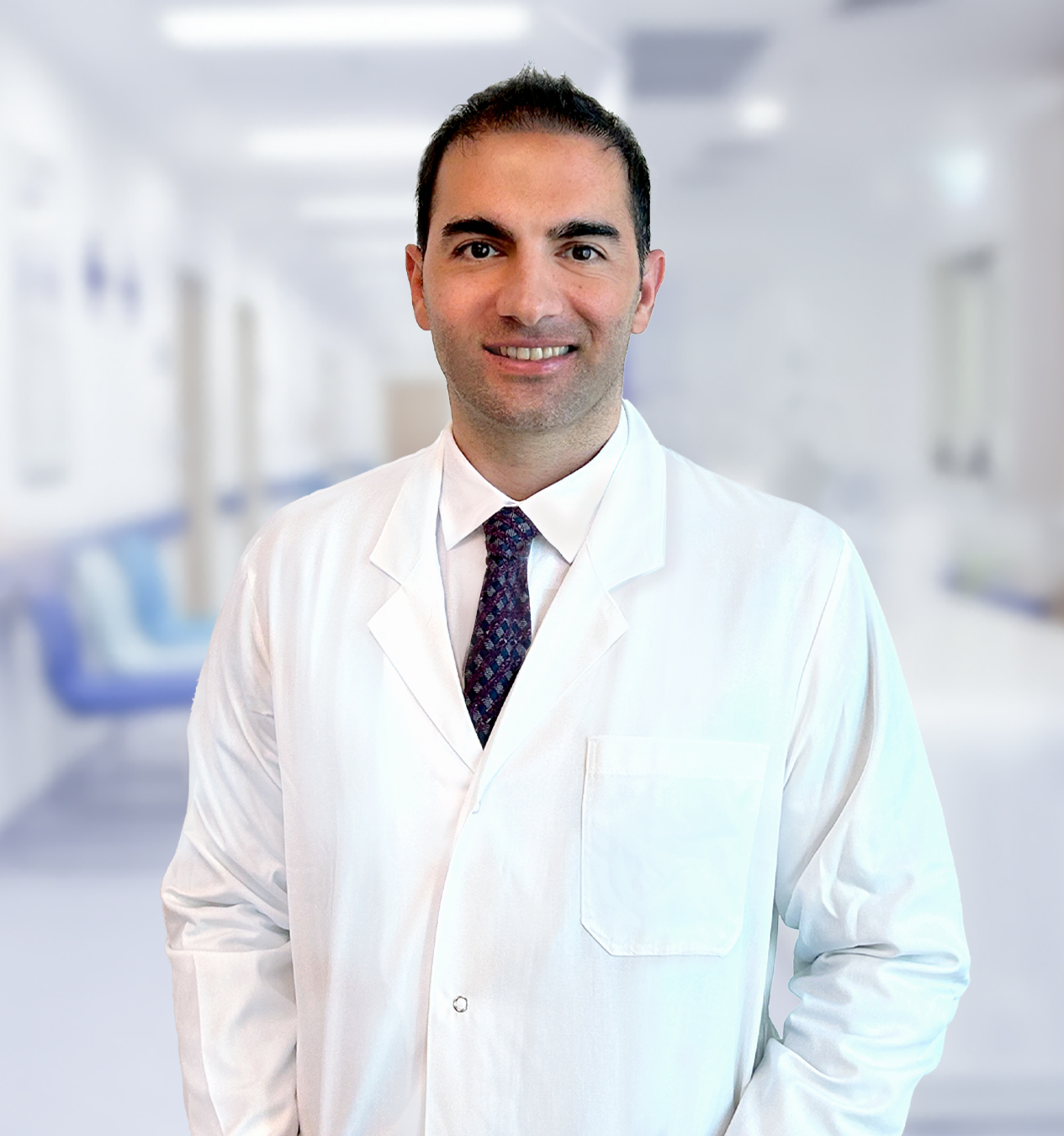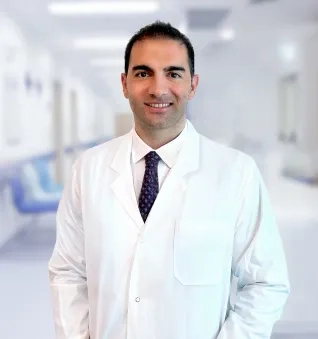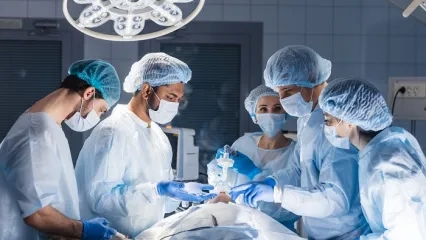Alo Yeditepe
Alo Yeditepe
Gallbladder Surgery is a Necessity, Not a Choice
Gallstones can cause serious problems if not treated in time!
Gallstones, which are seen in approximately 15 per cent of the society, are a problem that affects women over the age of 40 more. Noting that not every gallbladder stone requires surgery, but delaying surgery can also cause serious complications, General Surgery Specialist Assoc. Dr. Veysel Umman said, ‘The main issue is whether the stone is symptomatic and its effect on the patient's general health status. Especially in people with certain risk factors, surgery can be planned early, ‘he said. Assoc. Dr. Umman talked about important developments in gallbladder surgeries.
Stating that gallstones are the most common cause of gallbladder problems requiring surgery, General Surgery Specialist Assoc. Prof. Dr. Veysel Umman stated that gallbladder diseases are one of the most common operations of digestive system surgery worldwide. Our specialist reminded that approximately 1 million people in the US have gallbladder surgery every year, and that gallstone surgery in Turkey is one of the most common procedures in general surgery.
Giving information about the mechanism of formation of stones, Yeditepe University Kosuyolu Hospital General Surgery Specialist continued his words as follows: ‘In addition to many hormone synthesis and metabolic activities in the body, the liver also plays an important role with bile production. Bile is especially used in the digestion of fats. When food is eaten, the liver continues to produce bile, but some bile is stored in the gallbladder for rapid digestion. During the storage process, the bile condenses and sometimes turns into sludge, which can eventually turn into stones.”
“More Common in People Over 40”
Stating that gallstone formation is quite common in the society, our specialist said, ‘Gallstones can occur in every individual, but they are more common in women, individuals over the age of 40, those with a family history of gallstones, diabetic patients and those with metabolic diseases such as obesity. Genetic predisposition and lifestyle are important factors in the formation of gallstones.’
“Pain in the upper abdomen after meals may be a sign”
Stating that gallstones can sometimes remain asymptomatic for a long time, and the complaints that arise can be confused with different diseases such as stomach ailments or may be present at the same time, our specialist said, ‘Gallstones are hard masses crystallised in the gallbladder and often go unnoticed. However, in some patients, it may cause pain, indigestion, bloating, nausea and discomfort in the upper right region of the abdomen, especially after meals.’
Gallstones can remain asymptomatic for a long time
Emphasising that gallstones can sometimes remain in the gallbladder for years without any symptoms, but can lead to various diseases in the progressive process, our specialist said, ‘When it remains hidden for a long time, it can cause chronic inflammation in the gallbladder (cholecystitis) or polyp formation. Polyps have a risk of developing into cancer over time. In addition, stones falling into the pancreatic duct can lead to serious complications such as pancreatitis. Therefore, a controlled surgical planning while there is time is much safer and lower risk than the need for emergency surgery.’
When Gallbladder Surgery is Necessary?
Stating that whether the patient shows symptoms or not is an important criterion in the decision of surgery, our specialist said: ‘If the patient does not have any complaints despite having stones in the gallbladder, these patients can be followed up with blood tests and imaging methods at certain intervals. However, if the size of the stone exceeds 1 cm, if it has caused inflammation in the gallbladder or if the patient has complaints such as pain, bloating and indigestion in the right upper abdomen after meals, surgery becomes inevitable. If patients delay consulting a doctor in such cases, the gallbladder can become completely inflamed, stones falling into the bile ducts can cause obstruction and cause jaundice or cause very serious problems such as pancreatitis. In more advanced cases, the stones can block the bile duct and cause life-threatening risks such as peritoneal inflammation.”
‘There is no method such as removing part of the gallbladder’
Stating that there are misconceptions among the public that only the stones of the gallbladder can be removed or part of it can be left, our specialist said, ‘There is no such method in the world. In gallbladder surgeries, the entire sac is removed. There is no option such as cleaning the stones inside and leaving the sac. Some supportive endoscopic methods can be used before or after the operation.’
Referring to these supportive methods, our specialist said, ‘Sometimes gallstones can fall from the sac into the main bile duct. In this case, we can remove the stones non-surgically with a method we call ERCP before surgery. However, this procedure is only for the stones that fall into the duct and cause obstruction, not the stones in the sac, and does not replace surgery. Another method is the percutaneous cholecystostomy technique, which we use extensively for elderly patients who cannot tolerate surgery, especially during the pandemic period. This method is a non-surgical intervention option and can save time, although it is not an absolute cure. In this method, the overly swollen gallbladder can be emptied out through a needle and catheter inserted through the skin. However, these methods are not permanent solutions, they only provide temporary relief. For a permanent solution, especially the gallbladder that has started to become inflamed should be removed.’
Laparoscopic Cholecystectomy Became the Gold Standard
Stating that the vast majority of gallbladder surgeries today are performed by closed (laparoscopic) method, our specialist said, ‘Laparoscopic cholecystectomy, that is, gallbladder removal surgery performed with a closed system camera, is a minimal intervention surgical method that has become the gold standard in the treatment of gallbladder diseases today. This technique offers patients many advantages such as less pain, shorter hospital stay and faster recovery. Mentioning different surgical techniques used in special cases, my expert said, ‘In some patients, “scarless surgery” can be performed by making a single incision under the umbilicus. There is also a mini laparoscopy method performed with small instruments with a diameter of 2-3 mm.’
‘Fluorescent Imaging Technique Facilitates Surgeries'
“However, it may not always be easy to see anatomical structures clearly in laparoscopic procedures. Especially considering the variations of the biliary tract and the risk of surgical injury, it is important to use technological developments in this field.’ Our specialist explained the fluorescent imaging technique used especially in difficult cases. “”The fluorescent imaging technique allows us to see the biliary tract more clearly during surgery. Thanks to a special dye given to the patient before surgery, the biliary tract is visualised in detail with an infrared camera. This technique facilitates the surgical procedure in difficult cases and provides a great advantage in preventing biliary tract injuries.’
Requires a Healthy Lifestyle After Surgery
“After the removal of the gallbladder, a healthy lifestyle and a balanced diet help to prevent potential problems and most patients can live healthily for many years without any serious health problems as long as they follow the doctor's recommendations, ‘said our specialist and explained the following about the postoperative process: ‘After the operation, some patients may have complaints such as indigestion, bloating and nausea, which we temporarily call post-cholecystectomy syndrome. However, these usually resolve spontaneously within a few months. During this period, if patients pay attention to a lean and balanced diet, they will not have any problems. Because bile production continues in the liver and the digestion process works normally. It is important for a healthy recovery process that patients pay attention to their diets, avoid heavy fatty foods and do not neglect their medical check-ups.”
About
Faculty and Year of Graduation:
Yeditepe University, 2010
”
See Also
- Fall from Height Led to Kidney Failure, Saved by Sister's Donation
- What is a Liver Transplant, How is it Done? and Who is it For?
- Journey of Hope from Georgia to Turkey: 63-Year-Old Father Donates Kidney to Son
- Birthday Gift Becomes a Gift of Life: Kidney Donation from Husband of 20 Years
- Can Liver Cancer Be Prevented?
- Common Misconceptions About Kidney Transplantation
- 19 Years Old Davut MİNAZ, Who Lost 45 Kilos in 4 Months, Clung to Life with His Father's Kidney
- What are the Problems Requiring Gallbladder Surgery?
- What is Organ Donation?
- Liver Cancer (Tumor) and Treatment
- What is a Kidney Transplant?
Alo Yeditepe




